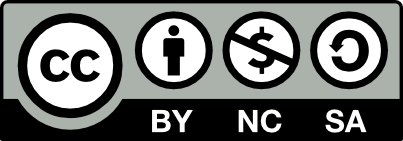Evaluation of gunshot injuries to long bones from pneumatic weapons using a human thigh model. Part II. Presentation and discussion of the detailed results of tests of gunshots of the anterior surface of the femur with 5.5 mm and 6.35 mm caliber shot = Ocena uszkodzeń postrzałowych kości długich z broni pneumatycznej z wykorzystaniem modelu uda ludzkiego. Część II. Wyniki szczegółowe badań postrzałów przedniej powierzchni kości udowej śrutem kal. 5,5 mm i 6,35 mm wraz z ich omówieniem
cytuj
pobierz pliki
RIS BIB ENDNOTEWybierz format
RIS BIB ENDNOTEData publikacji: 04.06.2024
Archiwum Medycyny Sądowej i Kryminologii, 2024, Vol. 74 (1), s. 28 - 49
https://doi.org/10.4467/16891716AMSIK.24.003.19648Autorzy
Evaluation of gunshot injuries to long bones from pneumatic weapons using a human thigh model. Part II. Presentation and discussion of the detailed results of tests of gunshots of the anterior surface of the femur with 5.5 mm and 6.35 mm caliber shot
Introduction. The development of pneumatic shooting has led to the construction of technologically advanced devices with discharge energies similar to those of firearms. The pneumatic weapons ammunition market offers a variety of shot which varies in penetration properties and the extent of gunshot damage. In view of the ease of „tuning” of air rifles, a study was conducted of the inlet damage to the anterior femoral surface after pneumatic gunshots. The paper shows the differences in damage parameters depending on the type of shot.
Material and methods. In the study, Air Arms Hi-Power Xtra FAC cal. 5.5 mm and FX Bobcat Mk II cal. 6.35 mm pneumatic carbines were used and lead shot by Haendler&Natterman’s Spitzkugel type, Hollow Point and Baracuda cal. 5.5 mm and 6.35 mm, as well as lead-free shot Excite Apollo cal. 5.5 mm and Black Max Lead-Free cal. 6.35 mm. Measurements were taken of the extent of inlet damage to the anterior surface of the femoral shaft with X-ray and CT imaging.
Results. HollowPoint shot caused the greatest range of gunshot penetration damage in both bone and periosteum, Apollo lead-free shot caused the least. At the same time, HollowPoint shot showed the greatest susceptibility to ricocheting.
Conclusions: 1. The type of shot used influences diversified morphology of the holes and the nature of gunshot damage to the femoral shaft. The differences concern both the gunshot holes and the nature, course and extent of associated fractures.
2. The smallest inlet holes and damage to the periosteum with a regular shape are caused by gunshots with pointed and pointed tip pellets. The greatest extent of bone and periosteum inlet damage was observed in gunshots with Hollow Point type shot due to its predisposition to deformation and fragmentation.
3. Radio-imaging studies are a valuable complement to macroscopic visual assessment providing a useful value for identifying the type of shot used.
Ballistic gelatin mixing procedures practiced by the FBI. http://www.vyse.common31.3.2003, (access: 01.01.2024)
Jussila J., Preparing ballistic gelatin – review and proposal for standard method. Forensic Sci Int 2004; 141: 91-99
Szayer M., Nowoczesne wiatrówki, Poradnik. Warszawa: Bellona; 2007.
Szayer M., Wejman A., Nowoczesne wiatrówki. Field Target, balistyka, testy i opisy. Warszawa Pro Press; 2004.
https://www.air-arms.co.uk/showroom_product/s410-carbine (access: 01.01.2024)
http://sklep.incorsa.pl/fx-airguns-karabin-wiatrowka-fx-bobcat-mkii,c15,p3613,pl.html, (access: 01.01.2024)
Di Maio V. J.M., Gunshot Wounds. Practical Aspects of Firearms, Ballistics, and Forensic Medicine, Second Edition. CRC Press LLC 1999, ISBN 0-8493-8163-0
Nguyen T-T. N., Tear G.R., Masouros S.D., Proud W.G. Fragment penetrating injury to long bones, AIP Conference Proceedings 1979, 090011; 2018
Nguyen T-T. N et al. Mapping the Risk of Fracture of the Tibia From Penetrating Fragments, Front. Bioeng. Biotechnol, 8/2020
Huelke D.F., Darling J.H., Bone fractures produced by bullets. J Forensic Sci 1964; 17: 461-469
Huelke D.F., et al. An experimental study in bio-ballistics femoral fractures produced by projectiles, J Biomech 1968 Jul;1(2):97-105
Huelke D.F. et al. An experimental study in bio-ballistics: femoral fractures produced by projectiles-II. Shaft impacts, J Biomech 1968 Dec;1(4):313-21
Wightman G., Beard J., Allison R.. An investigation into the behaviour of air rifle pellets in ballistic gel and their interaction with bone. Forensic Sci Int 2010; 200: 41-49
Koch C.J., The Laws of Bone Architecture, American Journal of Anatomy, 1917; 21:177-298.
Informacje: Archiwum Medycyny Sądowej i Kryminologii, 2024, Vol. 74 (1), s. 28 - 49
Typ artykułu: Oryginalny artykuł naukowy
Tytuły:
Collegium Medicum, Akademia WSB,
Akademia WSB w Dąbrowie Górniczej
GC Adwokaci Gradowska Chowaniec Spółka Partnerska, Czeladź
Polska
Katedra Anatomii, Wydział Nauk Medycznych w Katowicach, Śląski Uniwersytet Medyczny w Katowicach,
Śląski Uniwersytet Medyczny w Katowicach
Polska
Wydział Nauk Medycznych,
Akademia Śląska
Polska
Publikacja: 04.06.2024
Otrzymano: 13.01.2024
Zaakceptowano: 26.01.2024
Status artykułu: Otwarte
Licencja: CC-BY-NC-SA

Udział procentowy autorów:
Korekty artykułu:
-Języki publikacji:
Angielski, Polski